Yesterday, Saturn’s Cassini probe took its deepest dive yet through the icy geyser erupting from Enceladus’ south pole. We’re getting our first pictures of the historic flyby back now, and naturally, they’re incredible.
At around 11:30am EDT Wednesday (2:30am Thursday AEDT), the Cassini probe sailed a mere 30km above the south pole of Enceladus, Saturn’s tiny, eruptive ice moon that’s become one of the most promising hideouts for alien life in our solar system. Enceladus’ south pole geysers are spewing frozen water from the moon’s subterranean, geothermally-heated ocean, offering free samples to any curious space probes that just happen to be in the neighbourhood.
So on Wednesday, Cassini collected a droplet of that alien ocean water as it whizzed past the moon at 19,300km/h. The probe is now busy analysing that sample’s chemistry, searching for molecular hydrogen that could indicate a geothermal energy source. Within several weeks, we expect to get our first report back detailing just how potentially habitable this strange and beautiful moon really is.
Cassini was also snapping pictures as it sailed past the tiny ice world, dragging the open apertures of its narrow and wide angle cameras across Enceladus’ surface and shuttering like mad. The north pole was in day light and the south pole in darkness during the flyby, but in a way, that makes these pictures even more beautiful. They’re all illuminated by Saturnshine, light scattered off the billowy atmosphere of the nearby gas giant.
The images shown here are unprocessed, and NASA warns that they could contain artifacts. Nevertheless, they are marvellous, and right now I’m really wishing I lived three centuries in the future, when we will surely be holding the interplanetary winter Olympics on Enceladus. More unprocessed images from the flyby are available on the Cassini mission website.
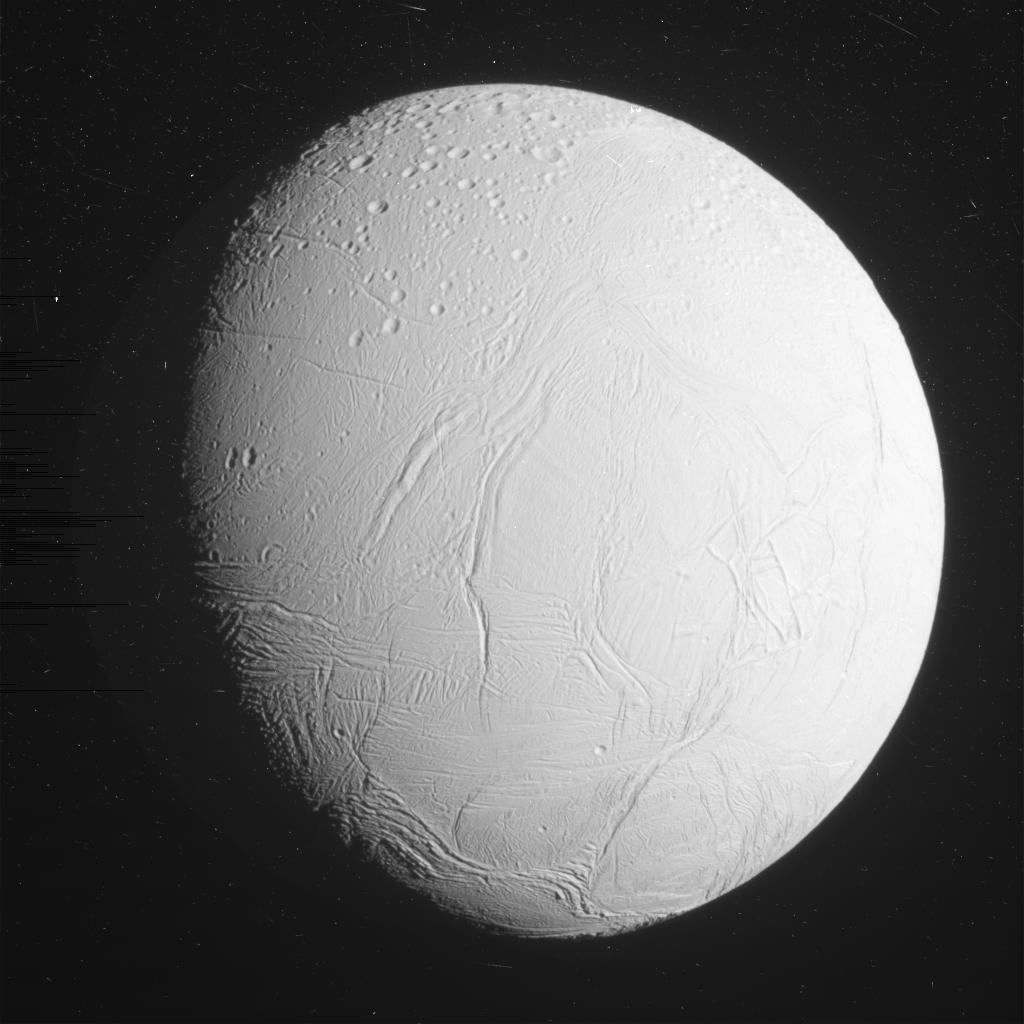
Enceladus’ crater-covered north pole starkly contrasts the cracked terrain around the ice moon’s mid-latitudes
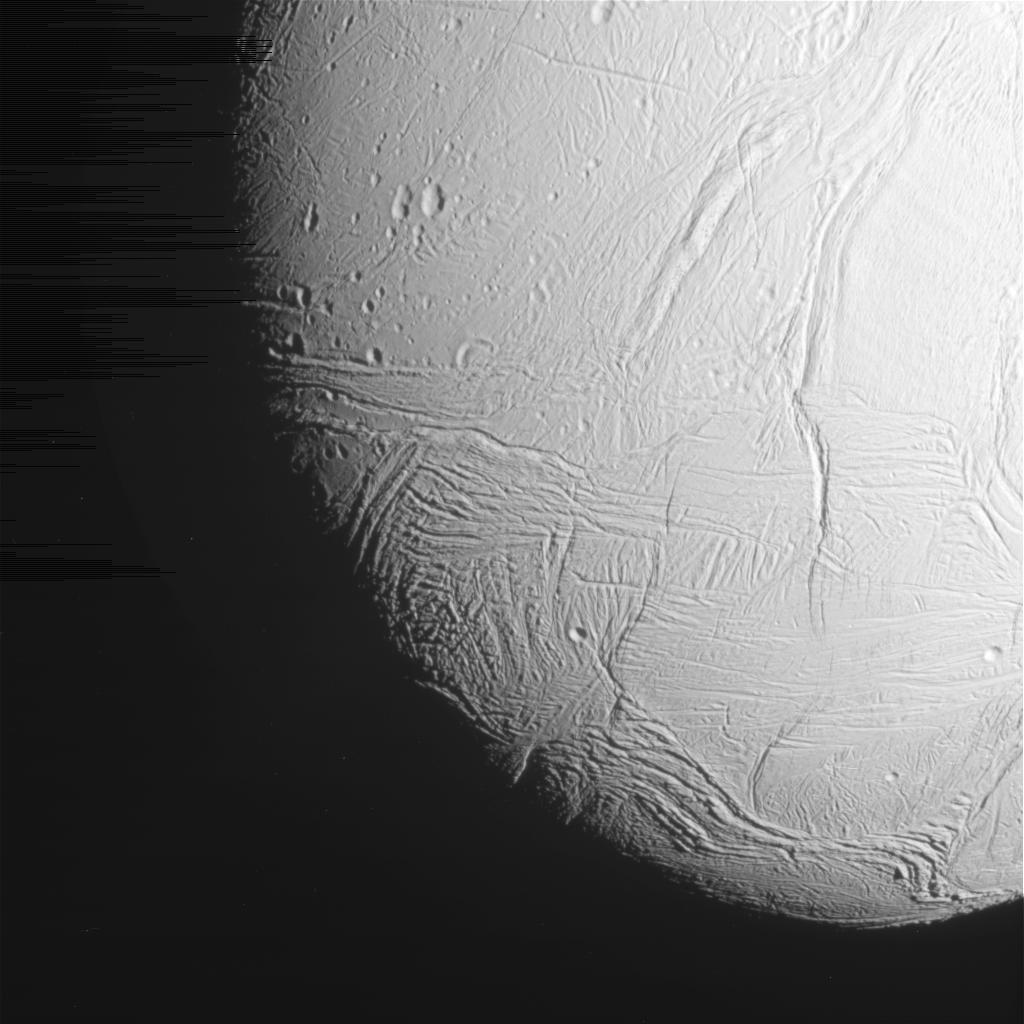
Enceladus, looking majestic
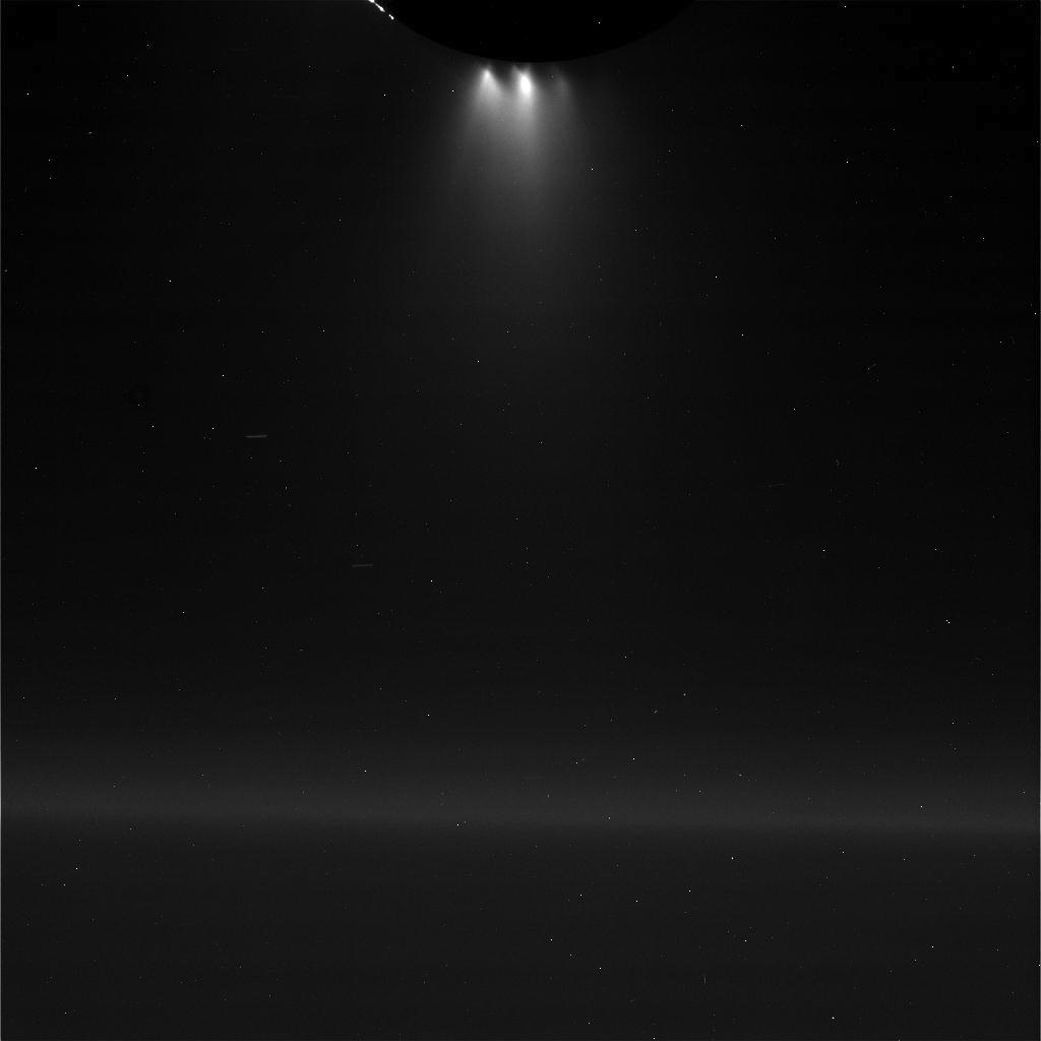
View of Enceladus’ south pole geyser, backlit by Saturn
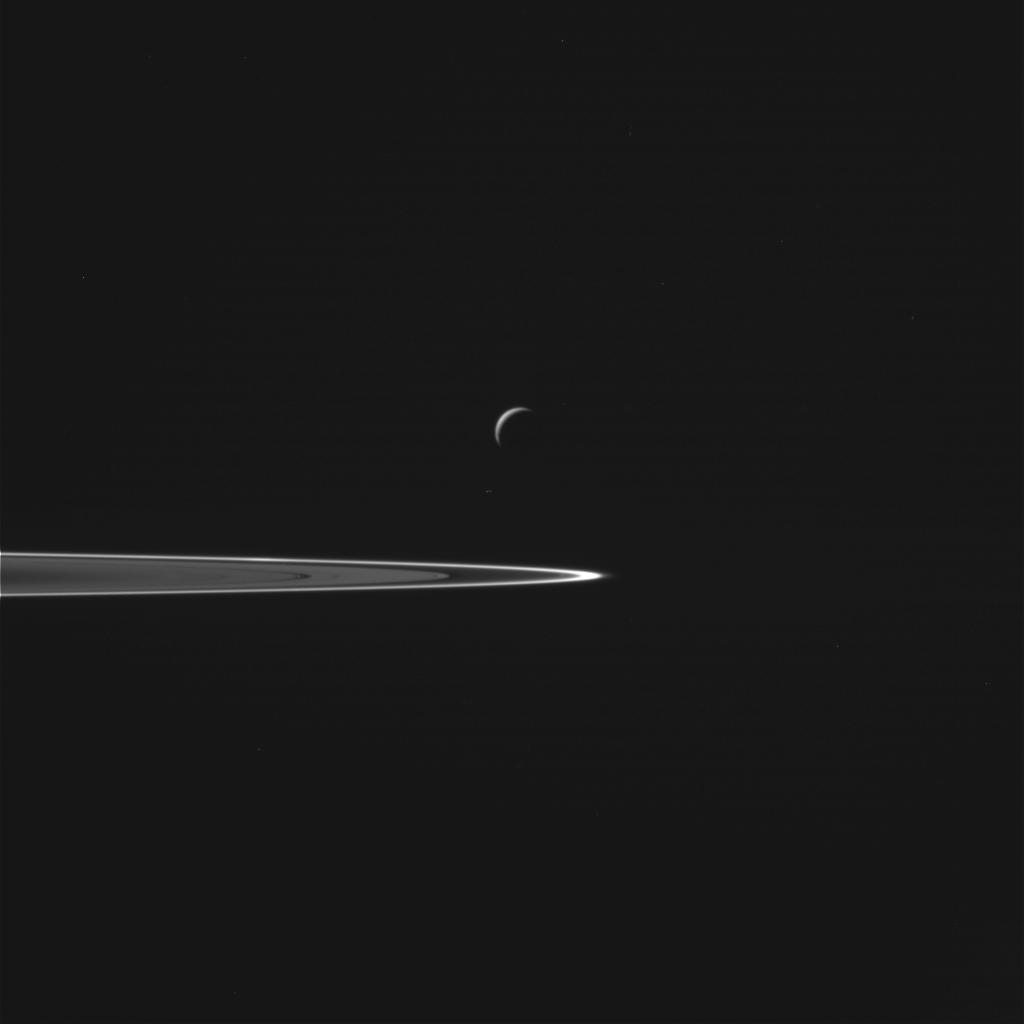
Enceladus, suspended above Saturn’s rings
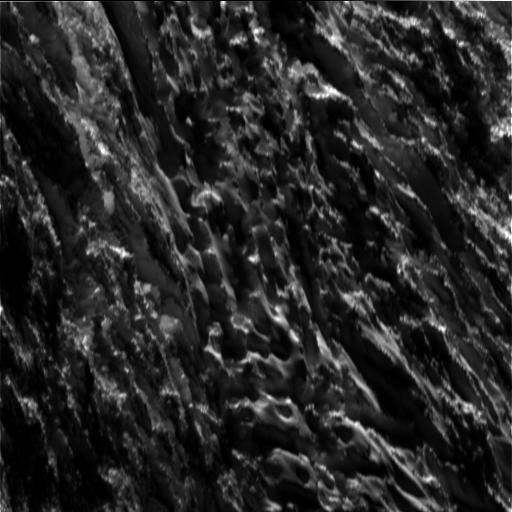
Unprocessed image from Cassini’s Enceladus flyby — perhaps more icy terrain?
Cassini will make a final flyby of Enceladus on December 19 before turning its attention to other Saturnian targets for the last two years of its mission. When the probe is nearing expiration, it will plunge into Saturn’s atmosphere and vaporise into a zillion tiny space probe atoms. Cassini, along with Enceladus itself, will essentially become a part of Saturn.
Image Credit: NASA / JPL / SSI
